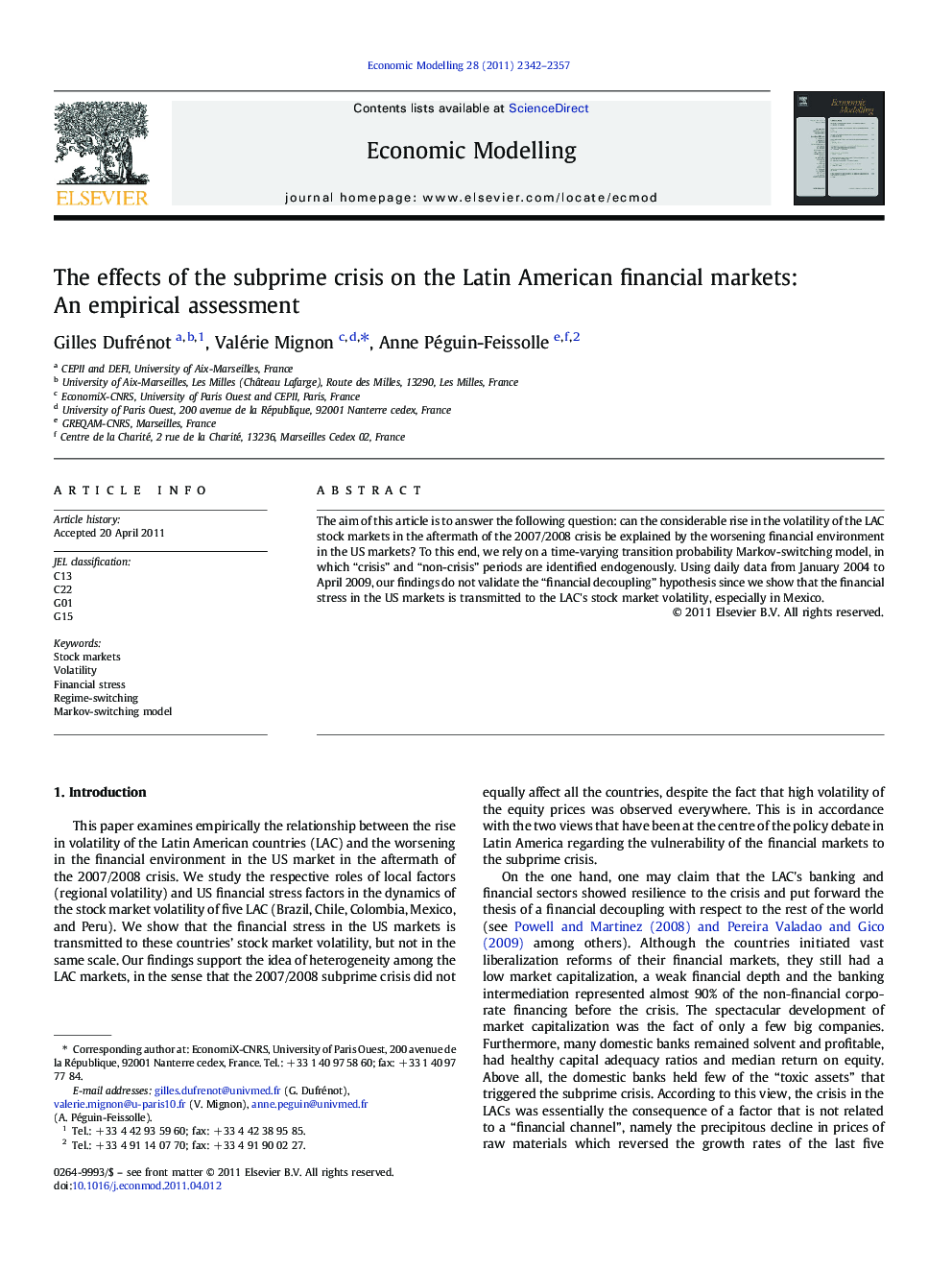| Article ID | Journal | Published Year | Pages | File Type |
|---|---|---|---|---|
| 5055217 | Economic Modelling | 2011 | 16 Pages |
The aim of this article is to answer the following question: can the considerable rise in the volatility of the LAC stock markets in the aftermath of the 2007/2008 crisis be explained by the worsening financial environment in the US markets? To this end, we rely on a time-varying transition probability Markov-switching model, in which “crisis” and “non-crisis” periods are identified endogenously. Using daily data from January 2004 to April 2009, our findings do not validate the “financial decoupling” hypothesis since we show that the financial stress in the US markets is transmitted to the LAC's stock market volatility, especially in Mexico.
Research Highlights⺠Time-varying transition probability Markov-switching models are estimated. ⺠Stress indicators in the US financial market cause abrupt changes in the volatility of the Latin American stock markets. ⺠Mexico is the most vulnerable to the US financial stress. ⺠Colombia, Peru and Brazil are much more sensible to the activity in the regional financial markets. ⺠The financial decoupling hypothesis is rejected.
